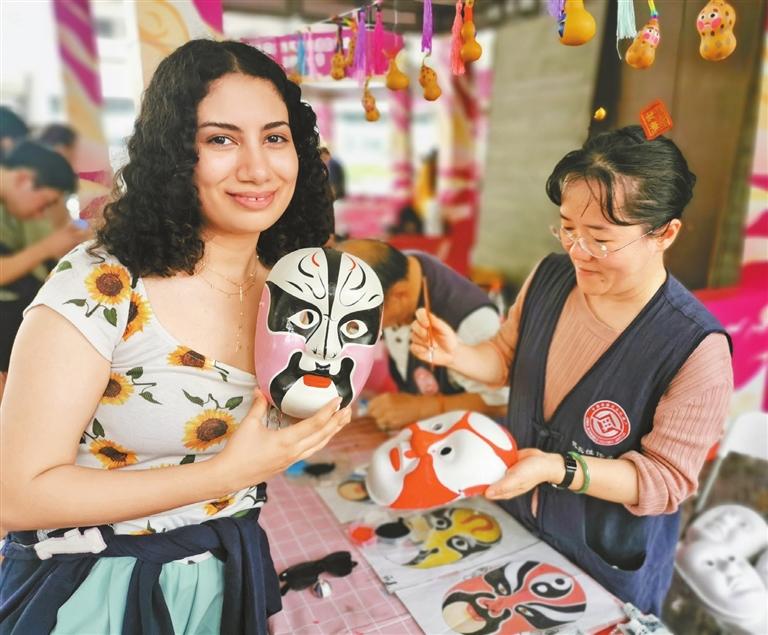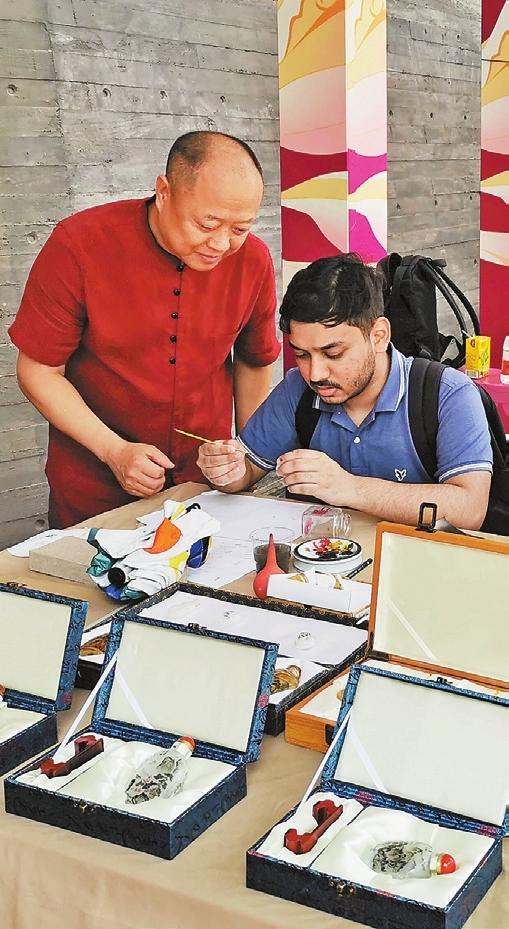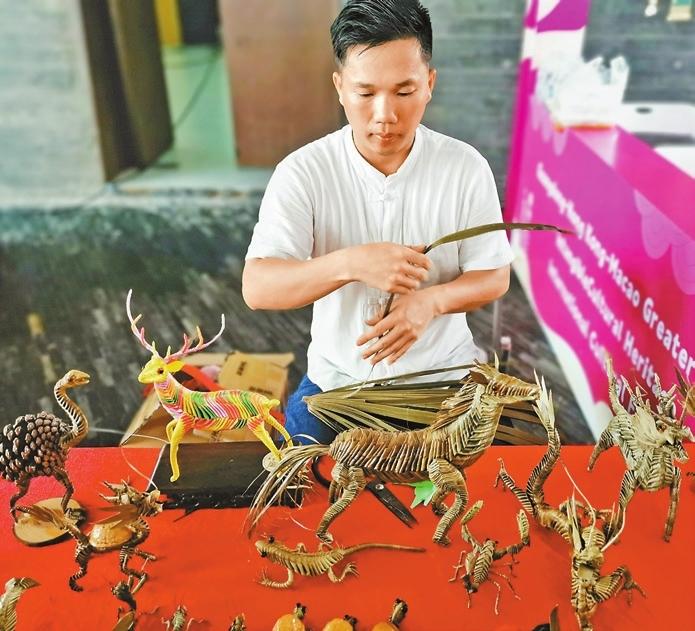


Debra Li debra_lidan@163.com DESPITE the heavy rainstorm on Thursday morning, the 15 booths in the open space in front of Zhiyi Building on Shenzhen University’s Yuehai campus were bustling with crowds. The International Cultural Festival of Intangible Cultural Heritage, organized by SZU’s Media and Communication School, sparked interest not just in Chinese students and teachers but also caught the attention of a visiting student delegation from Saudi Arabia. Cotton sculpture, painting inside glass bottles, leather carving, straw weaving, paper lanterns, traditional flower arrangement, face mask painting, Song Dynasty (960-1279) tea ceremony, incense ceremony, paper cutting, woodblock painting, and juci — a traditional method of repairing broken ceramics — all attracted long queues of people eager to experience them. Hanggai, a musician from Inner Mongolia, performed Khoomei singing and presented traditional ethnic music on the Morin Khuur for the visitors from Prince Sultan University, who applauded him enthusiastically. Rayan Mohsin, a sophomore student of electronics engineering, couldn’t contain his excitement when he successfully painted the Chinese characters “zhong guo” inside a glass bottle under the guidance of Master Wang Mengliang. Inside painting originated in the imperial palace during the Qing Dynasty (1644-1911), primarily used for painting snuff bottles, and has a history of over 300 years. Artists insert a specially made fine brush through the opening to paint inside a small transparent or semi-transparent utensil, most often a bottle nowadays. “I’ve never seen such fine handicraft before,” Mohsin said, adding that he has been learning Mandarin for three months and is a big fan of Chinese culture. He and his schoolmates had some previous experience with Chinese culture, as Tsinghua University students on exchange events previously brought traditional Chinese music and calligraphy to their school. “China is such a big country with such diverse cultures,” Mohsin said. Sawsan Saleem, who has studied Mandarin for four years, lingered before the booth of face mask painting. “This art is exquisite,” she said. “I also find the process of painting a face mask relaxing in the bustling modern life.” Initially used by shamans during religious rituals, masks today are often employed in dance and theatrical performances, becoming an important carrier of folk culture. The booth of the Song Dynasty tea ceremony also attracted a large following. Zhou Chaxiang, who works with a tea culture studio in Bao’an District, demonstrated the process of whipping brewed tea into a beverage with a thick layer of fine foam on top using a bamboo tool. She then used a fine brush to paint patterns with matcha sauce onto the foam. “The process helps us better absorb the nutrition within the tea; it also helps us calm down and savor the joy of focusing on tea drinking,” she explained. Xu Yanming, a master of straw weaving, helped several students learn the art of weaving sliced palm leaves into vivid miniature snakes, insects, and flowers. Zhang Wenwen, a teacher at SZU’s Media and Communication School, leads a team of over a dozen students in the effort to promote cultural heritages. They organized a similar event last December to raise awareness of the time-honored Chinese traditions. The team is also compiling a book of intangible cultural heritages, to be published later this year. Chao Naipeng, dean of the Media and Communication School, endorsed their effort. “We have many glorious traditions worth carrying on and learning about by the general public, particularly our younger generation,” he said, adding that the school’s previous effort of integrating intangible cultural heritage protection with digital technology is a good practice, because it “helps the legacy reach a larger audience.” “Getting young people from home and abroad involved is the first step to revitalizing these traditions,” he said. Chao also revealed that Shenzhen University cooperated with Prince Sultan University to unveil the first Confucius Academy in Saudi Arabia last year. | 
